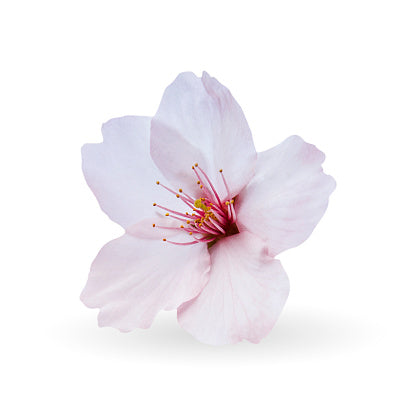Eko World Shop
Daisy Ring with Bee in 925 Silver and Zircons
Daisy Ring with Bee in 925 Silver and Zircons
Couldn't load pickup availability
Free shipping
Free shipping
Returns and exchanges within 30 days
Returns and exchanges within 30 days
Returns and exchanges up to 30 days after receiving your order!
The return can be requested within 14 days of receiving the order, and made within 30 days after receiving the order.
10% discount if you add it in the 🛒
10% discount if you add it in the 🛒
Unlock an additional discount when you buy multiple items!
The more you buy, the more you save! ❤️
The more you buy, the more you save! ❤️
The more you buy, the more you save!
Buy 2 Items with 15% discount
Buy 3 Items with 20% discount
Buy 4 Items for 25% off
The Bee and its symbolism
Since time immemorial, man has used the bee (Apis mellifera) to obtain honey. It is therefore not difficult to understand that this link is the source of innumerable superstitions concerning this insect. We will try to summarize them below.
The Greeks used to consecrate bees to the moon and Plato in the Doctrine of the Transmigration of Souls , probably inherited from previous Middle Eastern and African tribal cultures, argued that the souls of honest and placated people were reborn in the form of bees.
In ancient times in Great Britain, bees were also called "birds of God", in Germany instead as "birds of Mars".
During the time of the Holy Inquisition it was believed that a witch who ate a bee before being captured and interrogated would endure torture without making a confession.
For Christianity the bee was a symbol of chastity and virtue: hence the belief that bees cause a loud buzz before just before midnight on Christmas Eve in honor of the unborn Jesus. Another legend tells that from the tears of Jesus bees came out.

To avoid attracting bad luck, bees should never be sold, but bartered.
Many bees that fly near a sleeping child portend a happy life for that child, but if a bee dies in the house, bad luck is assured. The worst thing is to kill a bee in the house because, in this case, negative energies will pervade the house for many years.
Among the peoples of Mississippi it is a common belief that if you dream of a swarm of bees that alight on a house, bad luck will certainly come.
A virgin girl can safely go through a large swarm of bees without being stung while, if the bees remain stationary and doing nothing in a hive for a long time, they herald the arrival of a war.
Tradition has it that bees also have therapeutic properties in the treatment of rheumatism.
In the language of flowers, the daisy has several meanings, all positive and connected with the concept of 'truth'.
It is above all the delicate flower of purity and innocence, of simplicity and modesty, but also of faithful love and patience. Always appreciated for the beauty of its apparently simple features, the meaning of the daisy symbolizes youthful innocence, free from feelings of guilt, sin, corruption. Once, in fact, it was commonly collected in the meadows by girls and slipped between the locks of hair. Depending on the subjects involved, the message inherent in the daisies became particularly significant when they were given and accepted: praise to the numerous virtues, as many as there were petals of each of these flowers, delivered sincerity and irreproachability in the hands of those who received it, but could also constitute a promise of faithful love. Thus, when the silent language in flowers was popularly known, a young girl accepted daisies with great honor, considering it a gesture in honor of her respectability or a proof of affection.
The cut flower, gathered in a beautiful bouquet, has commonly remained celebratory of the 5th anniversary, while in a bouquet of daisies it is given to a new mother as a sign of welcome for the newborn. Due to the shape of the flower, with the petals radiating around the central yellow disc, the daisy in fact cheers as if it brought the sun into people's lives. The Anglo-Saxons had given it an appropriate name: 'daisy', which derived from 'day's eye' and meant 'day's eye', since it opened in the morning and closed at night, and from this it had induced it in ancient times to use it for soothe eye problems. In some parts of England, it was also called 'thunderflower' as it reaches its seasonal flowering peak in summer, when thunderstorms are more frequent, but it was also thought to protect against thunder and lightning.

30 DAY MONEY BACK GUARANTEE
are you not satisfied with your purchase? You will have the option to return it and receive a full refund within 30 days of payment.






Discover all the jewels
-

Tree of Life
The Tree of Life commonly represents the interconnectedness of everything in the...
-

The magic of Flowers
Floriography is the 'language of flowers'. Dating back to the Victorian times...
-

World Fruit Jewels
Jewels in 925 Silver and Natural Stones inspired by the world of...
-

Animal Kingdom
The animal kingdom has been a rich source of inspiration for jewellery...

Turtle ring

Natural Stone Ring

Dragonfly earrings

Serpent Ring

Donut Charm
Popular caregories ...
View all-

Lotus flower
Lotus Flower Inspired Jewelery ...
-

Plum blossom
Jewelery inspired by the Plum Blossom
-

Sakura flowers
Sakura flower inspired jewelry ...
-

Guaranteed quality
Over 25,000 satisfied customers worldwide. -

Secure payment
We entrust the management of our online payments to Stripe and Paypal , 100% safe. -

Money Back Guarantee
Returns are possible up to 30 days from receipt of the items.

4,98 su 5 stelle
Basato su oltre 300 Recensioni.
Visualizzane una selezione o inviaci una tua foto per ottenere un Buono da 10 €



























